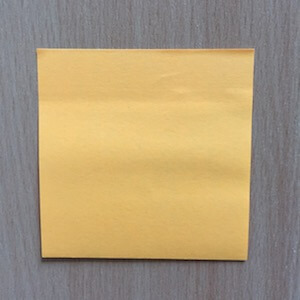Self-stick note
The self-stick note is a piece of paper coloured usually squared with a low-tack adhesive band on the back side. Self-stick note was invented on 1974 by Arthur Fry, thanks to an accidental creation of a "low-tack, reusable, pressure-sensitive adhesive", as mentioned on Wikipedia, by scientist Spencer Silver. Indeed, on 1968 Dr. Silver was trying to find the formula for a super-strong adhesive, insted he invented an unusual kind of adhesive: strong enough to stick on objects but weak enough to allow an easy removal of the them from the surface where they were attached. The product is also known as post-it, that is the brand name gave by the manufacturer 3M. Now that I gave a short introduction I can go to the core of this post.

A Self-stick note
Why I think self-stick note is an example of good design
- Essential design: a squared piece of paper
- Colour: the choise of a lively colour to be visible and highlight the content
- Material: paper allows the user to write on it easily with any kind of pen, pencil or marker. Furthermore, it is a light material perfect for the features of the adhesive
- Shape: square shape gives a compact visual aspect and all the space can be used to write on it
- Reusable: the special adhesive on the b-side makes possible to attach it, remove it and re-post it again withouth leaving residue
- Easy to use
- Versatile: thanks to its minimal design it can be used in many contexts and for different purposes. During the years people use it at work, at home, in arts, just to take a quick note or to create a planning.
![[logo] www.fabianalassandro.ac.uk](img/logo-upside-down-emoji.png)